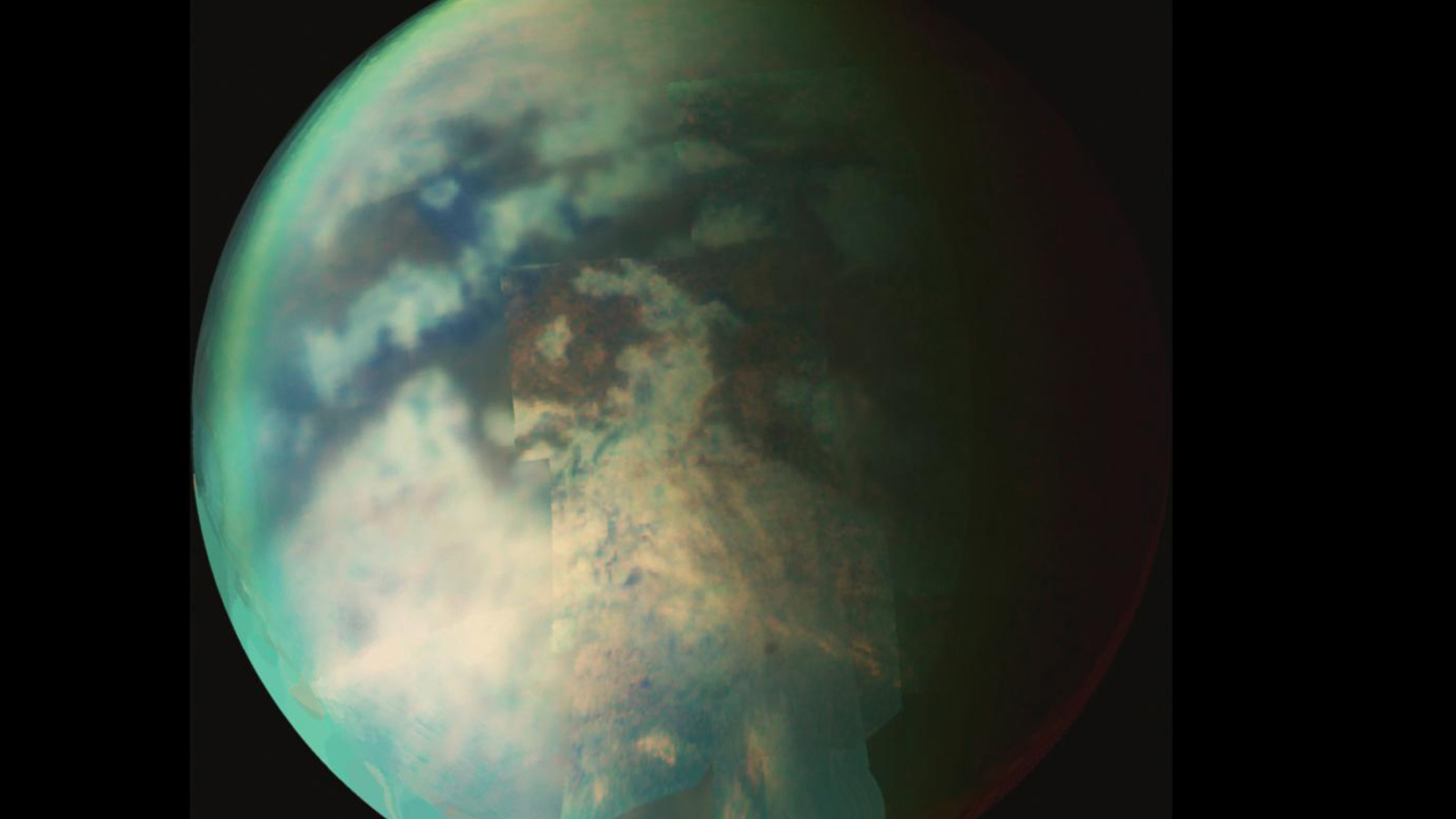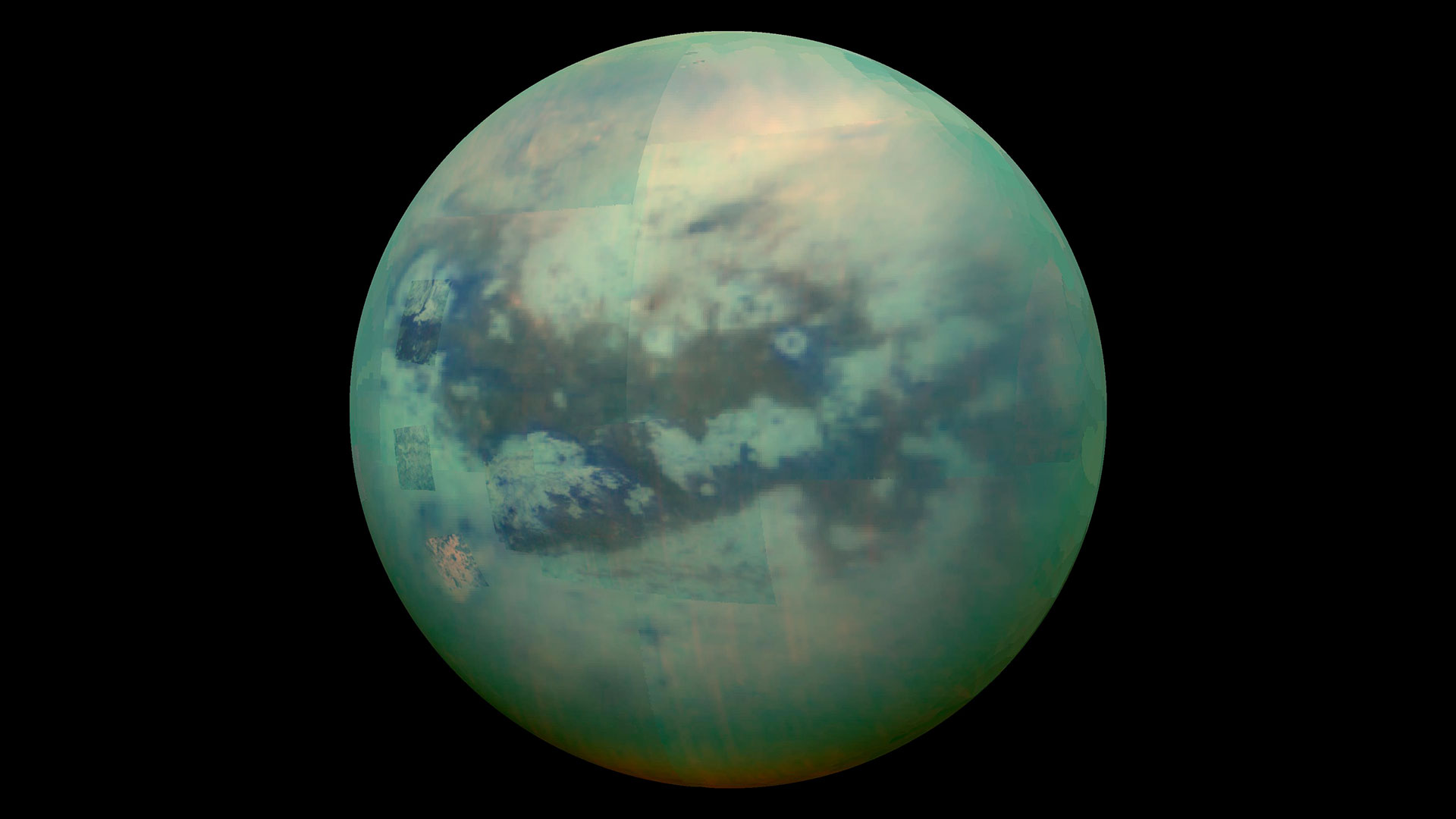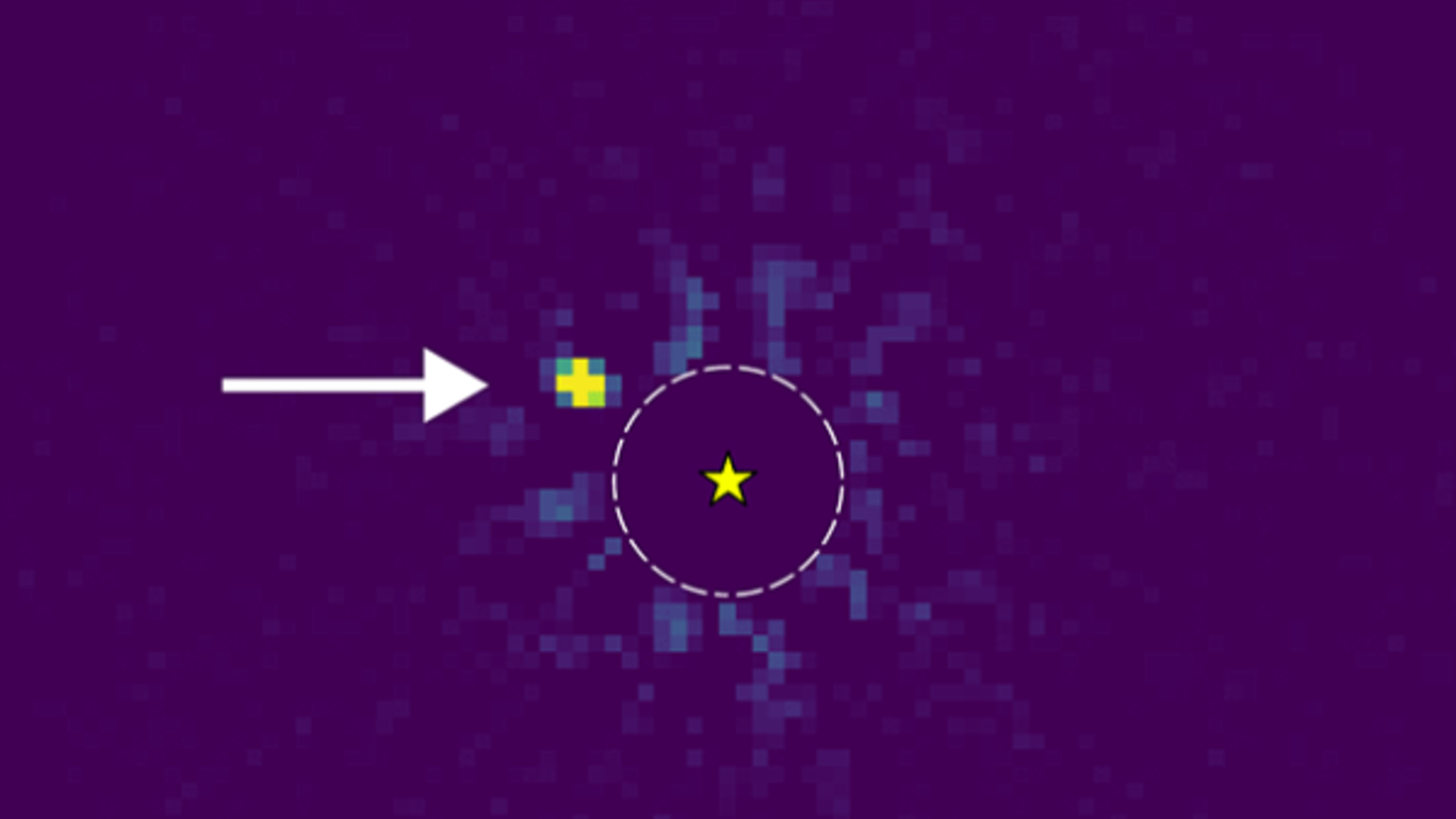'We've got a new mystery on our hands': Titan's weird wobble just got even stranger
New research reveals more about why Saturn's large moon tilts, a puzzle that has intrigued scientists for decades.

For years, scientists have been intrigued by a weird "wobble" in the atmosphere of Titan, Saturn's largest moon. Now, new research is revealing clues about Titan's strange atmospheric tilt, but it's also raising new mysteries.
Data from the Cassini mission to Saturn has shown that, unlike Earth's atmosphere, Titan's atmosphere doesn't rotate in sync with its surface. Instead, it tilts and shifts like a spinning top that changes its orientation with the seasons.
"The behaviour of Titan's atmospheric tilt is very strange," Lucy Wright, lead author of the new research and a postdoctoral researcher in the School of Earth Sciences at the University of Bristol in the U.K., said in a statement. "We think some event in the past may have knocked the atmosphere off its spin axis, causing it to wobble."

Scientists thought the direction of the tilt would be influenced by either Saturn's gravity or the position of the sun, as is often the case in planetary systems — meaning it would change as Titan orbited Saturn and the sun. But observations show that the tilt direction doesn't move. Instead, it stays pointed the same way in space, as if unaffected by those external forces.
This finding was unexpected. If solar heating or Saturn's gravity were controlling the tilt, it should move over time. Instead, the tilt seems locked in place, suggesting that some other, still-unknown process is at work, the researchers reported in a study published May 20 in The Planetary Science Journal.
"That would've given us clues to the cause," Nick Teanby, co-author of the study and a planetary scientist at the University of Bristol, said in the statement. "Instead, we've got a new mystery on our hands."
Titan is the only moon in the solar system known to have a substantial atmosphere. It is composed primarily of nitrogen and contains complex organic molecules, making it a scientifically important object for studying things like atmospheric processes and prebiotic chemistry.
Breaking space news, the latest updates on rocket launches, skywatching events and more!
From 2004 to 2017, NASA's Cassini spacecraft closely observed Titan, revealing important changes in its atmosphere, like a steady tilt in the middle layers and the appearance and disappearance of swirling winter polar vortices.
This new understanding of Titan's atmospheric wobble is important for NASA's upcoming Dragonfly mission, which is set to arrive in the 2030s. Because Titan's winds are much faster than its surface rotation, knowing how the atmosphere shifts with the seasons will help engineers more accurately plan Dragonfly's descent and landing.
"Our work shows that there are still remarkable discoveries to be made in Cassini's archive," study co-author Conor Nixon, a planetary scientist at NASA's Goddard Space Flight Center, said in the statement. "This instrument, partly built in the U.K., journeyed across the Solar System and continues to give us valuable scientific returns.
"The fact that Titan's atmosphere behaves like a spinning top disconnected from its surface raises fascinating questions — not just for Titan, but for understanding atmospheric physics more broadly, including on Earth," Nixon added.

A chemist turned science writer, Victoria Corless completed her Ph.D. in organic synthesis at the University of Toronto and, ever the cliché, realized lab work was not something she wanted to do for the rest of her days. After dabbling in science writing and a brief stint as a medical writer, Victoria joined Wiley’s Advanced Science News where she works as an editor and writer. On the side, she freelances for various outlets, including Research2Reality and Chemistry World.
You must confirm your public display name before commenting
Please logout and then login again, you will then be prompted to enter your display name.
